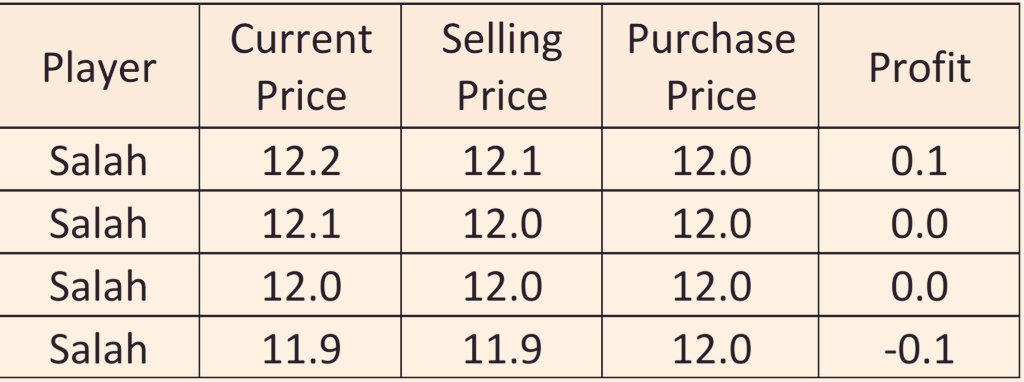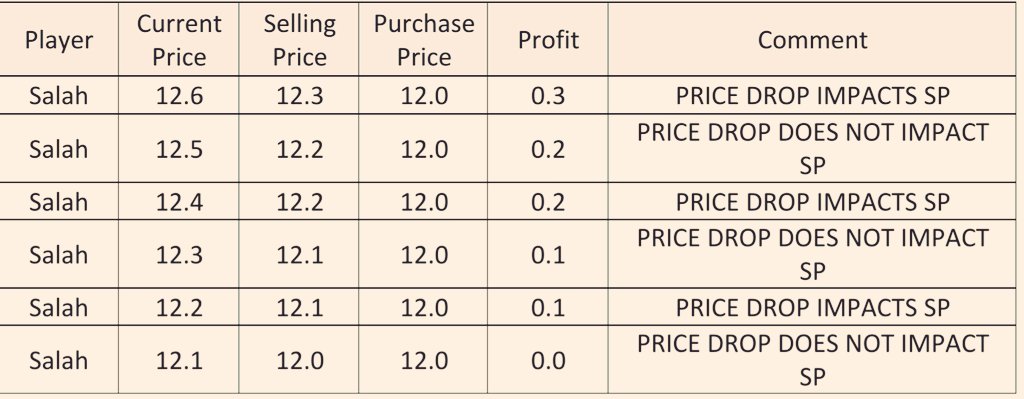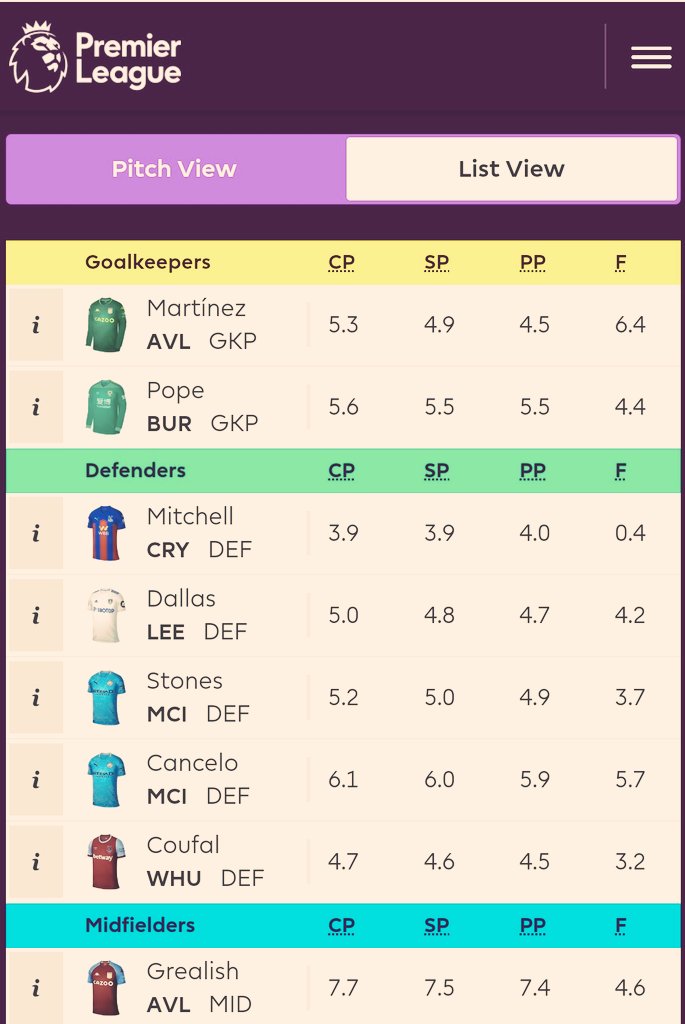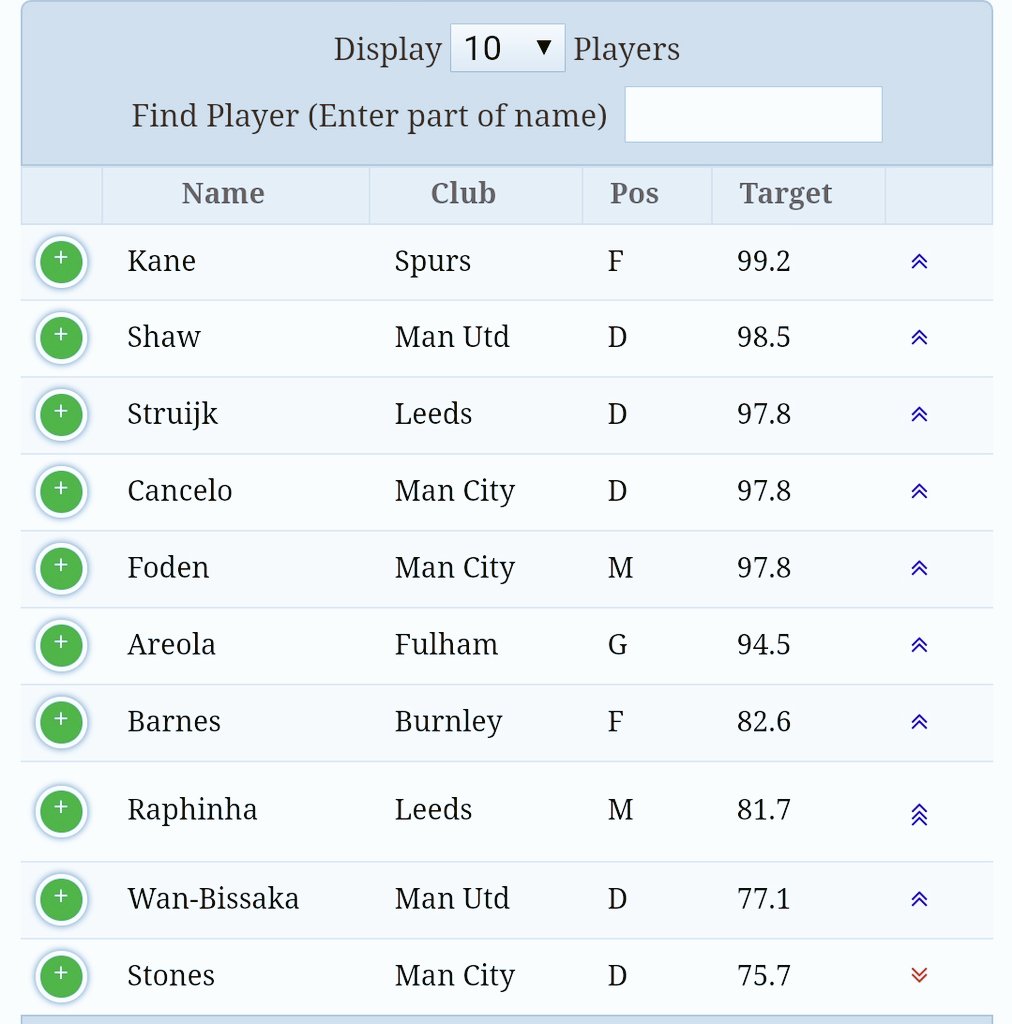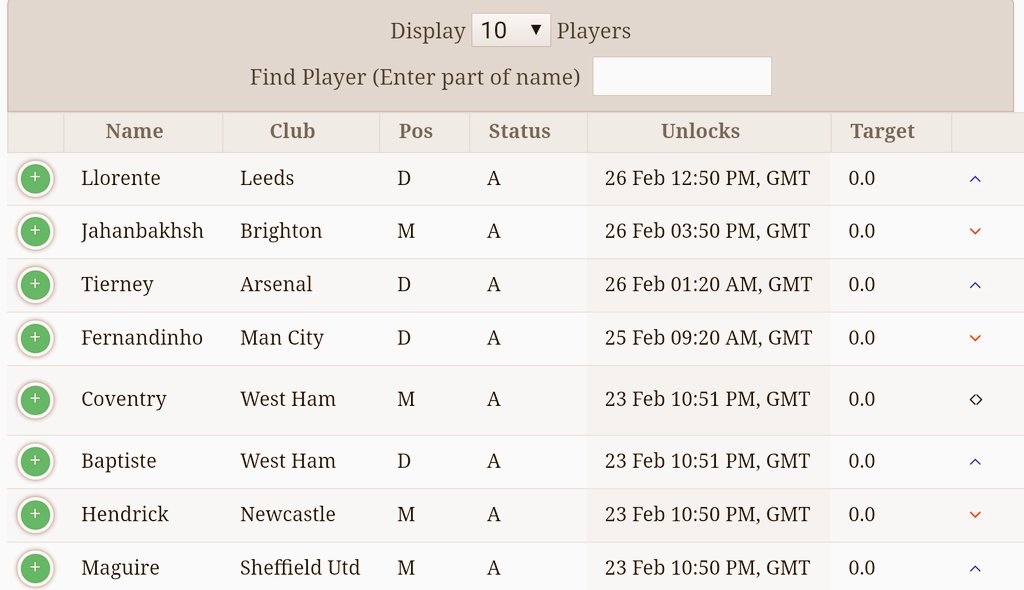Principles of FPL Price Changes {Thread}
In this article I will explain the basics of price changes, discuss transfer strategy, and how to spot value.
I aim to provide an understanding that novice managers can use to gain an edge over rivals.
#FPL #FPLCommunity @FFH_HQ
In this article I will explain the basics of price changes, discuss transfer strategy, and how to spot value.
I aim to provide an understanding that novice managers can use to gain an edge over rivals.
#FPL #FPLCommunity @FFH_HQ
The Basics:
Player prices change due to FPL transfer market activity which is influenced by form, fixtures, injuries, and suspensions.
Player prices may change by £0.1m a day and can rise or fall by a maximum of £0.3m per gameweek.
Player prices change due to FPL transfer market activity which is influenced by form, fixtures, injuries, and suspensions.
Player prices may change by £0.1m a day and can rise or fall by a maximum of £0.3m per gameweek.
For each price rise over the original purchase FPL managers receive 50 percent profit rounded down to the nearest £0.1m.
In the table below you can see that a price rise for Salah of £0.1m from a purchase price of £12.0m does not impact his selling price.
In the table below you can see that a price rise for Salah of £0.1m from a purchase price of £12.0m does not impact his selling price.
However, if Salah rises to £12.2m his selling price increases by £0.1m.
Please note that profit in a player is notional and is only banked when they are sold.
Furthermore, any player price drop of £0.1m below the original purchase price is felt in full.
Please note that profit in a player is notional and is only banked when they are sold.
Furthermore, any player price drop of £0.1m below the original purchase price is felt in full.
When value is accrued there is slack and not all price drops impact selling price. Players that have an even amount of gross profit (cp – pp) will see their selling price drop by £0.1m if they drop in price. Players that have an odd amount of gross profit can drop without impact.
On the transfers page there is an option to select to list view. This will reveal a breakdown of your squad’s relevant prices (i.e. current price, selling price, and purchase price). This information is crucial in determining when a price change will impact one of your players.
Price Change Predictions:
The number of transfers needed to make a player change price is set by FPL and “won’t be revealed to any game players”. However, since the game began the FISO community have monitored net transfers and established correlation to price changes.
The number of transfers needed to make a player change price is set by FPL and “won’t be revealed to any game players”. However, since the game began the FISO community have monitored net transfers and established correlation to price changes.
This research led to the creation of mathematical formula & third party utilities which closely replicate the FPL price change algorithm. The industry standard at present is @fpl_statistics which does the heavy lifting by identifying players that are due a price rise or drop.
Amendments to the algorithm by FPL can lead to inaccurate predictions in early weeks until price prediction sites adjust their formulae. Price prediction sites cannot be taken as gospel and early season it can be wise to move early in case of a surprise price change.
Furthermore, there are anomalies when a player’s price is locked and transfers do not contribute (i.e. new players to the league are locked for approx. eight days). A player red flagged through injury or suspension will be price locked when the red flag status is removed.
Value Based Transfer Strategy:
Undoubtedly, leaving transfers until the deadline will lead to an information advantage from training pictures, press conferences, and team leaks.
Cautious FPL managers will gain information but forgo price changes which could leave them ...
Undoubtedly, leaving transfers until the deadline will lead to an information advantage from training pictures, press conferences, and team leaks.
Cautious FPL managers will gain information but forgo price changes which could leave them ...
unable to make their originally intended moves. Conversely, price aggressive FPL managers could make early transfers and buy players for a cheaper price but risk incurring injuries.
The famous quote “everything in moderation including moderation” echoes my thoughts on a ...
The famous quote “everything in moderation including moderation” echoes my thoughts on a ...
price based transfer strategy. Combining a sound knowledge of the price mechanism with information provided by prediction sites can help you to time transfers perfectly.
For example a price drop for a player in your squad might make no difference to their selling price.
For example a price drop for a player in your squad might make no difference to their selling price.
Furthermore, an extra day could be the difference in a prospective replacement being injured in a midweek Champions League match or coming through unscathed.
Furthermore, this season environmental factors such as Covid-19 have added an extra element of risk.
Furthermore, this season environmental factors such as Covid-19 have added an extra element of risk.
Early moves for highly desired players can be risked if there are no midweek games & or environmental factors to avoid being priced out. Furthermore, shifting a player due to drop and buying a desired player due to rise can be lead to big upswings in team value.
Recently FPL managers have grown frustrated at points on their bench due to the number of value picks in the game and overall squad depth.
However, a high performing squad of 15 players will accrue value better than a team operating with one or two bench fodder subs.
However, a high performing squad of 15 players will accrue value better than a team operating with one or two bench fodder subs.
Wildcard & Free Hit:
The wildcard can be powerful in generating additional funds. Bandwagon players from the previous week can potentially double rise and be sold for a profit.
Furthermore, underperforming players can be sold before they drop below purchase price. When ...
The wildcard can be powerful in generating additional funds. Bandwagon players from the previous week can potentially double rise and be sold for a profit.
Furthermore, underperforming players can be sold before they drop below purchase price. When ...
on a wildcard it is important to know how close to a rise or drop every player in your team is.
Care should be taken with players that you have accrued value in as removing them from your team and confirming transfer will involve rebuying at the higher purchase price.
Care should be taken with players that you have accrued value in as removing them from your team and confirming transfer will involve rebuying at the higher purchase price.
Furthermore, when the free hit chip is played if you remove a player with accrued value and confirm the transfer you will pay their current price if you rebuy them that week.
Spotting Value:
FPL managers should look for clues that players may represent good or bad value.
Spotting Value:
FPL managers should look for clues that players may represent good or bad value.
Injuries could represent an opportunity for starts, a player could be deployed out of position, or perhaps a penalty missed could see spot kicks passed on. Below I have a couple of examples from this season.
James Justin (£5.0m) started at full-back in place of the injured ...
James Justin (£5.0m) started at full-back in place of the injured ...
Ricardo Pereira (£5.9m) offering a cheap route into the tight Leicester City defence. The Englishman was priced some £1.0m cheaper than Leicester’s other defensive options and buyers were rewarded with 101pts before his season was ended through injury.
George Baldock (£4.9m) impressed last season for Sheffield United. A price hike dented his appeal as did the loss of keys members of the Blades rear-guard. These issues coupled with second season syndrome has seen their defensive performance tank and players represent bad value.
In conclusion, understanding the FPL price change system is fundamental in building team value. Team value built early in the season can provide competitive advantage over rivals as the season reaches crunch time. Your transfer strategy should be calm and calculated.
Risks should be considered rather than aggressive and gung-ho. Value accrued in a player should not be a burden that prevents us from selling. While undoubtedly big team value can help to assemble a powerhouse FPL managers should not chase team value at the expense of points.
For those that have read, thank you.
If you’d like to join @FFH_HQ you can get 15% off with this link:
https://fantasyfootballhub.co.uk/Hibbert/67
If you like the content drop me a RT and click “follow” and keep an eye for more articles in the near future.
Peace & good luck for #DGW25
If you’d like to join @FFH_HQ you can get 15% off with this link:
https://fantasyfootballhub.co.uk/Hibbert/67
If you like the content drop me a RT and click “follow” and keep an eye for more articles in the near future.
Peace & good luck for #DGW25


 Read on Twitter
Read on Twitter